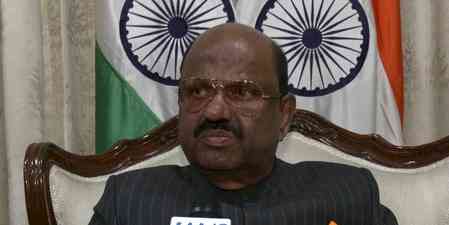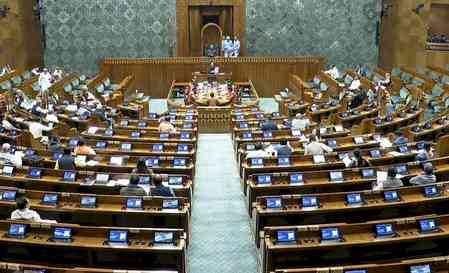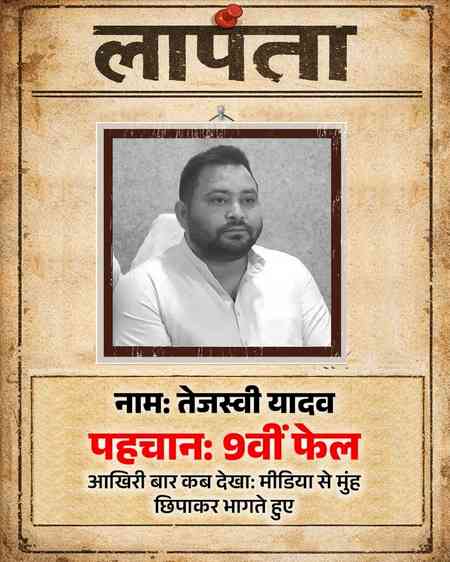OPINION: NCRB record 48,338 child rape cases with 336% increase from 2001 to 2011
Asian Centre for Human Rights (ACHR) recommendations needs to be adopted to bring down the graph of rape cases The Asian Centre for Human Rights is a NGO (non-governmental organisation) dedicated to the promotion and protection of human rights...
Asian Centre for Human Rights (ACHR) recommendations needs to be adopted to bring down the graph of rape cases
The Asian Centre for Human Rights is a NGO (non-governmental organisation) dedicated to the promotion and protection of human rights and fundamental freedoms in the Asian region. Its recommendations to put a check on the alarming increase of child rape cases, needs to adopted to bring down the graph of rape cases.
According to National Crimes Record Bureau (NCRB), a total of 48338 child rape cases were recorded from 2001 to 2011 and India saw an increase of 336 per cent of child rape cases from 2113 cases in 2001 to 7112 cases in 2011. These are only the tip of the iceberg as the large majority of child rape cases are not reported to the police while children regularly become victims of other forms of sexual assault too.
UN Special Rapoorteur is visiting India on an official visit from 22 April to 1 May to study the sexual offences against children in India which have reached an epidemic proportion and a large number of them are being committed in the juvenile justice homes run and aided by the Government of India.
At a glance :
|
Sr.No. |
State |
No. of Rape cases |
|
1 |
Madhya Pardesh |
9465 |
|
2 |
Uttar Pardesh |
5949 |
|
3 |
Andhra Pardesh |
3977 |
|
4 |
Chattisgarh |
3688 |
|
5 |
Delhi |
2909 |
|
6 |
Rajasthan |
2776 |
|
7 |
Kerala |
2101 |
|
8 |
Tamil Nadu |
1486 |
|
9 |
Haryana |
1081 |
|
10 |
Punjab |
1068 |
|
11 |
Gujarat |
999 |
|
12 |
West Bengal |
744 |
|
13 |
Odisha |
736 |
|
14 |
Karnataka |
719 |
|
15 |
Himachal Pardesh |
571 |
|
16 |
Bihar |
519 |
|
17 |
Tripura |
457 |
|
18 |
Meghalaya |
452 |
|
19 |
Assam |
316 |
|
20 |
Jharkhand |
218 |
|
21 |
Mizoram |
217 |
|
22 |
Goa |
194 |
|
23 |
Uttarakhand |
152 |
|
24 |
Chandigarh |
135 |
|
25 |
Sikkim |
113 |
|
26 |
Manipur |
98 |
|
27 |
Arunachal Pradesh |
93 |
|
28 |
Jammu & Kashmir |
69 |
|
29 |
Andaman & Nicobar |
65 |
|
30 |
Pandicherry |
41 |
|
31 |
Nagaland |
38 |
|
32 |
Dadra & Nagar Haveli |
15 |
|
33 |
Daman &Diu |
9 |
Many of the child rape cases take place in juvenile justice homes established under the Juvenile Justice (Care and Protection of Children) Act, 2000 and by the end of financial year 2011-2012, about 733 juvenile justice homes were fully supported by the Government of India under the Integrated Child Protection Scheme (ICPS) of the Ministry of Women and Child Development.
In the case of government-run juvenile justice homes, the perpetrators were staffs including the caretakers, security guards, cooks and other Class IV employees, and the senior inmates. In two cases, the sexual abuses were committed by the senior inmates in collusion with the staff.
Asian Centre for Human Rights blamed the Government of India i.e. the Ministry of Women and Child Development and the State Governments for the continuing sexual assault on children in the juvenile justice homes. The National Commission for Protection of Child Rights, State Commissions for Protection of Child Rights and the Child Welfare Committees intervene only after crimes are reported but there are no preventive mechanisms or regular inspections.
The report highlighted four major failures for the continuing sexual assaults in the government run and aided or unregistered juvenile homes.
First, most State governments have not formed Inspection Committees which are mandated to inspect the juvenile justice homes and report at least once in every three months.
Second, there are hundreds of unregistered child care homes across the country despite the requirement to register the same within six months under JJ(C& PC) Act, 2006. Inspection is seldom carried out in these unregistered homes and children remain extremely vulnerable to sexual abuse in these homes.
Third, though there are 462 District Child Welfare Committees (CWCs) in 23 States mandated to verify fit institutions, majority of them exist only on paper.
Fourth, though Rule 40 of the Juvenile Justice (Care and Protection of Children) Rules 2007 provides for separate facilities between for boys and girls as well as according to age i.e. for boys and girls up to 12 years, 13-15 years and 16 years and above, this provision has not been complied with. The lack of segregation on the basis of gender, nature of offences and age facilitates senior inmates to commit the offences against minor inmates including girls.
Asian Centre for Human Rights also, among others, recommended immediate establishment of the Inspection Committees in all the districts and mandatory inspection of the juvenile justice homes by the Inspection Committees in every three months; stopping funds to any home unless inspection reports are submitted; separate budgetary allocations for the functioning of the Inspection Committees, ban on posting of male staff in girls’ homes, separation of residential facilities based on the nature of offences, gender and age, completion of inspection of all unregistered homes within six months and registration of cases against the authorities of the unregistered juvenile justice homes.
(Disclaimer: The views expressed by the author in this article are his own and do not necessarily reflect the views of City Air News.)


 cityairnews
cityairnews 









